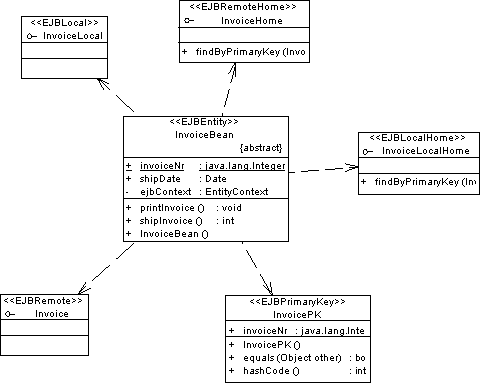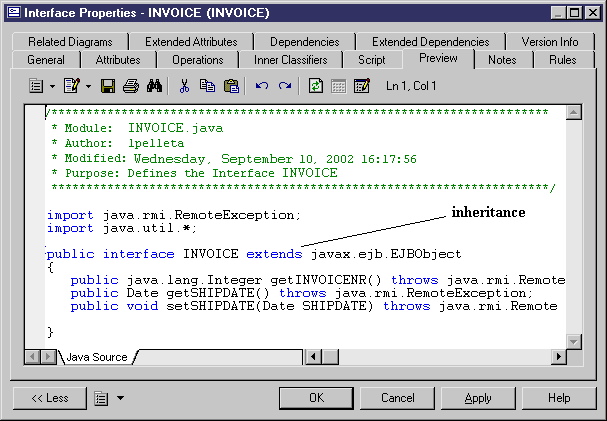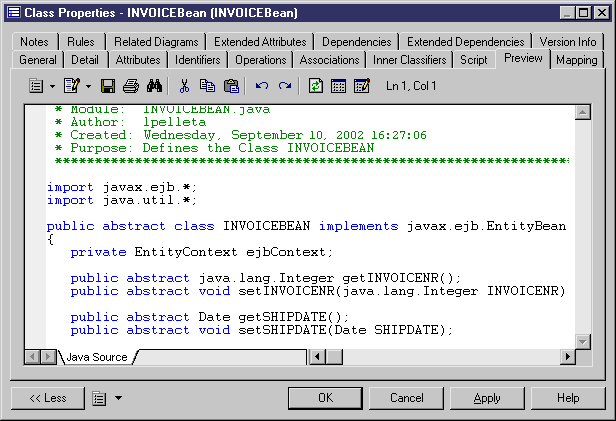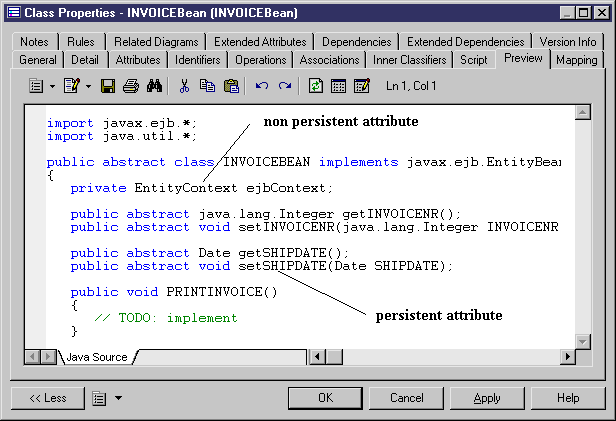PowerDesigner simplifies the development process by transparently handling EJB concepts and enforcing the EJB programming contract.
-
Automatic initialization - When creating an EJB, the role of the initialization process is to initialize classes and interfaces and their methods with respect to the EJB programming contract. PowerDesigner automatically does this whenever a class or interface is attached to an EJB
-
Synchronization - maintains the coherence of the whole model whenever a change is applied:
-
Operations - Synchronization occurs from interface to Bean class with linked methods (Understanding Operation Synchronization).
-
Exceptions - Synchronization occurs from Bean class to interface. (Understanding Operation Synchronization).
-
Primary identifier attribute - Synchronization occurs from Bean class to Primary key class, when attribute is primary identifier in Bean class it is automatically migrated to primary key class.
-
-
Model checks: the Check Model feature validates a given model and complements synchronization by offering auto-fixes. You can check your model at any time using the Check Model feature from the Tools menu (see Checking and OOM).
-
Template based code generation - EJB-specific templates are available in the Profile/Component/Templates category of the Java object language resource file. The generation of EJB classes and interfaces creates the following inheritance links (for Entity beans CMP):
-
The local home interface inherits javax.ejb.EJBLocalHome
-
The local interface inherits javax.ejb.EJBLocalObject
-
The remote home interface inherits javax.ejb.EJBHome
-
The remote interface inherits javax.ejb.EJBObject
It creates the following realization links:-
The Primary key class implements java.io.Serializable
-
The Bean class implements javax.ejb.EntityBean
It transforms cmp-fields (attributes flagged as Persistent) and cmr-fields (attributes that are migrated from associations)into getter and setter methods:
-
-
Forward engineering: from an OOM to a PDM. It provides the ability to create and reverse EJBs in a OOM, generate the corresponding PDM, O/R Mapping and generate code
-
Reverse engineering: from a PDM (database) to an OOM. It provides the ability to create and reverse tables in a PDM, generate corresponding classes, create EJB from given classes and generate code



